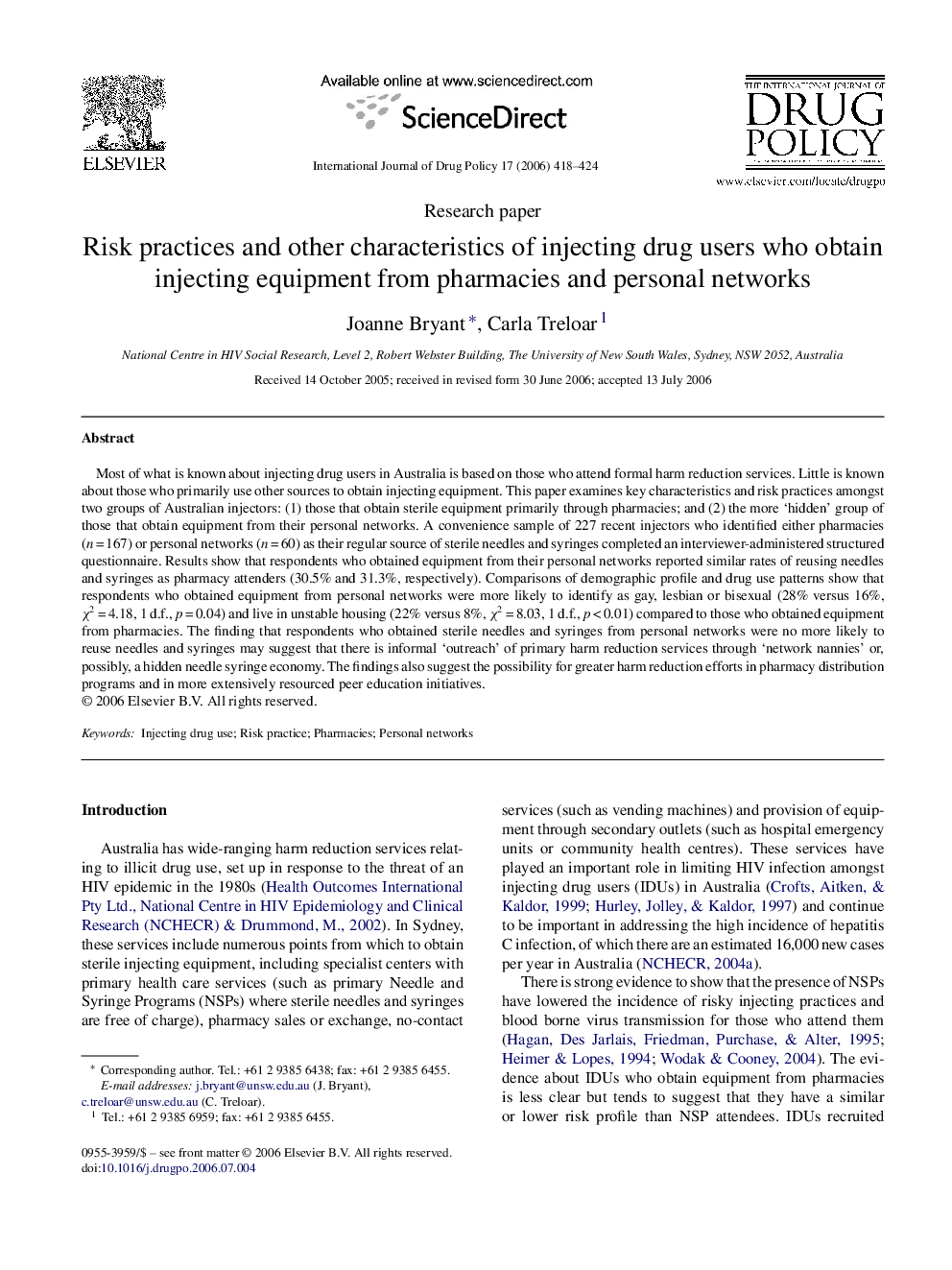| Article ID | Journal | Published Year | Pages | File Type |
|---|---|---|---|---|
| 1075708 | International Journal of Drug Policy | 2006 | 7 Pages |
Abstract
Most of what is known about injecting drug users in Australia is based on those who attend formal harm reduction services. Little is known about those who primarily use other sources to obtain injecting equipment. This paper examines key characteristics and risk practices amongst two groups of Australian injectors: (1) those that obtain sterile equipment primarily through pharmacies; and (2) the more 'hidden' group of those that obtain equipment from their personal networks. A convenience sample of 227 recent injectors who identified either pharmacies (n = 167) or personal networks (n = 60) as their regular source of sterile needles and syringes completed an interviewer-administered structured questionnaire. Results show that respondents who obtained equipment from their personal networks reported similar rates of reusing needles and syringes as pharmacy attenders (30.5% and 31.3%, respectively). Comparisons of demographic profile and drug use patterns show that respondents who obtained equipment from personal networks were more likely to identify as gay, lesbian or bisexual (28% versus 16%, Ï2 = 4.18, 1 d.f., p = 0.04) and live in unstable housing (22% versus 8%, Ï2 = 8.03, 1 d.f., p < 0.01) compared to those who obtained equipment from pharmacies. The finding that respondents who obtained sterile needles and syringes from personal networks were no more likely to reuse needles and syringes may suggest that there is informal 'outreach' of primary harm reduction services through 'network nannies' or, possibly, a hidden needle syringe economy. The findings also suggest the possibility for greater harm reduction efforts in pharmacy distribution programs and in more extensively resourced peer education initiatives.
Related Topics
Health Sciences
Medicine and Dentistry
Psychiatry and Mental Health
Authors
Joanne Bryant, Carla Treloar,
